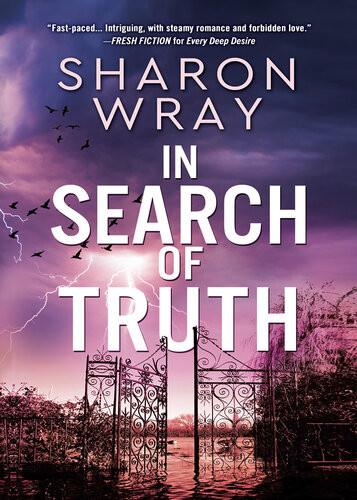TABLEOFCONTENTS
Newtothe FourthEdition xviii
AudienceandScopexix
OrganizationandStructureoftheBookxxi
TheWebSitefor EthicsandTechnology xxiii
ANotetoStudentsxxiv
NotetoInstructors:ARoadmapforUsingThisBookxxiv
ANotetoComputerScienceInstructorsxxv
ACKNOWLEDGMENTSxxvii FOREWORDxxix
c CHAPTER1
INTRODUCTIONTOCYBERETHICS:CONCEPTS,PERSPECTIVES, ANDMETHODOLOGICALFRAMEWORKS1
Scenario1–1:AFatalCyberbullyingIncidentonMySpace1
Scenario1–2:ContestingtheOwnershipofaTwitterAccount2
Scenario1–3: “TheWashingtonienne” Blogger2
1.1DefiningKeyTerms:CyberethicsandCybertechnology3
1.1.1WhatIsCybertechnology?4
1.1.2WhytheTermCyberethics?5
1.2TheCyberethicsEvolution:FourDevelopmentalPhasesinCybertechnology6
1.3AreCyberethicsIssuesUniqueEthicalIssues?9
Scenario1–4:DevelopingtheCodeforaComputerizedWeaponSystem10
Scenario1–5:DigitalPiracy11
1.3.1DistinguishingbetweenUniqueTechnologicalFeaturesandUnique EthicalIssues11
1.3.2AnAlternativeStrategyforAnalyzingtheDebateabouttheUniqueness ofCyberethicsIssues12
1.3.3APolicyVacuuminDuplicatingComputerSoftware13
1.4CyberethicsasaBranchofAppliedEthics:ThreeDistinctPerspectives14
1.4.1Perspective#1:CyberethicsasaFieldofProfessionalEthics15
1.4.2Perspective#2:CyberethicsasaFieldofPhilosophicalEthics18
1.4.3Perspective#3:CyberethicsasaFieldofSociological/DescriptiveEthics21
Scenario1–6:TheImpactofTechnologyXonthePleasantvilleCommunity21
1.5AComprehensiveCyberethicsMethodology24
1.5.1A “Disclosive” MethodforCyberethics25
1.5.2AnInterdisciplinaryandMultilevelMethodforAnalyzing CyberethicsIssues26
1.6AComprehensiveStrategyforApproachingCyberethicsIssues27
1.7ChapterSummary28
References73 FurtherReadings73
c CHAPTER3
CRITICALREASONINGSKILLSFOREVALUATINGDISPUTESINCYBERETHICS74
3.1GettingStarted74
Scenario3–1:ReasoningAboutWhethertoDownloadaFilefrom “Sharester” 75
3.1.1DefiningTwoKeyTermsinCriticalReasoning:ClaimsandArguments75
3.1.2TheRoleofArgumentsinDefendingClaims76
3.1.3TheBasicStructureofanArgument76
3.2ConstructinganArgument78
3.3ValidArguments80
3.4SoundArguments83
3.5InvalidArguments85
3.6InductiveArguments86
3.7FallaciousArguments87
3.8ASeven-StepStrategyforEvaluatingArguments89
3.9IdentifyingSomeCommonFallacies91
3.9.1 AdHominem Argument92
3.9.2SlipperySlopeArgument92
3.9.3FallacyofAppealtoAuthority93
3.9.4FalseCauseFallacy93
3.9.5BeggingtheQuestion94
3.9.6FallacyofComposition/FallacyofDivision94
3.9.7FallacyofAmbiguity/Equivocation95
3.9.8AppealtothePeople(ArgumentumadPopulum)95
3.9.9TheMany/AnyFallacy96
3.9.10TheVirtualityFallacy97
3.10ChapterSummary98
ReviewQuestions98
DiscussionQuestions98
Essay/PresentationQuestions99 ScenariosforAnalysis99
Endnotes99 References100
FurtherReadings100
c CHAPTER4 PROFESSIONALETHICS,CODESOFCONDUCT,ANDMORALRESPONSIBILITY101
4.1ProfessionalEthics102
4.1.1WhatIsaProfession?103
4.1.2WhoIsaProfessional?103
4.1.3WhoIsaComputer/ITProfessional?104
4.2DoComputer/ITProfessionalsHaveAnySpecialMoralResponsibilities?105
4.2.1Safety-CriticalSoftware105
4.3ProfessionalCodesofEthicsandCodesofConduct106
4.3.1ThePurposeofProfessionalCodes107
4.3.2SomeCriticismsofProfessionalCodes108
4.3.3DefendingProfessionalCodes109
4.3.4TheIEEE-CS/ACMSoftwareEngineeringCodeofEthicsandProfessional Practice110
4.4ConflictsofProfessionalResponsibility:EmployeeLoyaltyandWhistle-Blowing112
4.4.1DoEmployeesHaveanObligationofLoyaltytoEmployers?112
4.4.2Whistle-BlowingIssues114
Scenario4–1:Whistle-Blowingandthe “StarWars” Controversy115
4.4.3AnAlternativeStrategyforUnderstandingProfessionalResponsibility117
4.5MoralResponsibility,LegalLiability,andAccountability117
4.5.1DistinguishingResponsibilityfromLiabilityandAccountability118
4.5.2AccountabilityandtheProblemof “ManyHands” 119
Scenario4–2:TheTherac-25Machine120
4.5.3LegalLiabilityandMoralAccountability120
4.6RiskAssessmentintheSoftwareDevelopmentProcess121
Scenario4–3:TheAegisRadarSystem121
4.7DoSomeComputerCorporationsHaveSpecialMoralObligations?122
4.7.1SpecialResponsibilitiesforSearchEngineCompanies123
4.7.2SpecialResponsibilitiesforCompaniesthatDevelopAutonomousSystems124
4.8ChapterSummary125
ReviewQuestions126
DiscussionQuestions126
Essay/PresentationQuestions126
ScenariosforAnalysis127
Endnotes128 References128 FurtherReadings130
c CHAPTER5 PRIVACYANDCYBERSPACE131
5.1ArePrivacyConcernsAssociatedwithCybertechnologyUniqueorSpecial?132
5.2WhatisPersonalPrivacy?134
5.2.1AccessibilityPrivacy:FreedomfromUnwarrantedIntrusion135
5.2.2DecisionalPrivacy:FreedomfromInterferenceinOne’s PersonalAffairs135
5.2.3InformationalPrivacy:ControlovertheFlowofPersonal Information136
5.2.4AComprehensiveAccountofPrivacy136
Scenario5–1:DescriptivePrivacy137
Scenario5–2:NormativePrivacy137
5.2.5Privacyas “ContextualIntegrity” 137
Scenario5–3:PreservingContextualIntegrityinaUniversitySeminar138
5.3WhyisPrivacyImportant?139
5.3.1IsPrivacyanIntrinsicValue?140
5.3.2PrivacyasaSocialValue141
5.4GatheringPersonalData:Monitoring,Recording,andTrackingTechniques141
5.4.1 “Dataveillance” Techniques141
5.4.2InternetCookies142
5.4.3RFIDTechnology143
5.4.4CybertechnologyandGovernmentSurveillance145
5.5ExchangingPersonalData:MergingandMatchingElectronicRecords146
5.5.1MergingComputerizedRecords146
Scenario5–4:MergingPersonalInformationinUnrelatedComputerDatabases147
5.5.2MatchingComputerizedRecords148
Scenario5–5:UsingBiometricTechnologyatSuperBowlXXXV149
5.6MiningPersonalData150
5.6.1HowDoesDataMiningThreatenPersonalPrivacy?150
Scenario5–6:DataMiningattheXYZBank151
5.6.2WebMining154
Scenario5–7:TheFacebookBeaconControversy154
5.7ProtectingPersonalPrivacyinPublicSpace156
Scenario5–8:ShoppingatSuperMart157
Scenario5–9:ShoppingatNile.com157
5.7.1SearchEnginesandtheDisclosureofPersonalInformation158
Scenario5–10:TrackingYourSearchRequestsonGoogle159
5.7.2AccessingOnlinePublicRecords160
Scenario5–11:AccessingOnlinePublicRecordsinPleasantville161
Scenario5–12:AccessingaState’sMotorVehicleRecordsOnline162
5.8Privacy-EnhancingTechnologies162
5.8.1EducatingUsersaboutPETs163
5.8.2PETsandthePrincipleofInformedConsent163
5.9PrivacyLegislationandIndustrySelf-Regulation164
5.9.1IndustrySelf-RegulationInitiativesRegardingPrivacy164
Scenario5–13:ControversiesInvolvingGoogle’sPrivacyPolicy166
5.9.2PrivacyLawsandDataProtectionPrinciples166
5.10ChapterSummary168
ReviewQuestions169 DiscussionQuestions169
Essay/PresentationQuestions170 ScenariosforAnalysis170 Endnotes171 References171 FurtherReadings173
c CHAPTER6 SECURITYINCYBERSPACE174
6.1SecurityintheContextofCybertechnology174
6.1.1CybersecurityasRelatedtoCybercrime175
6.1.2SecurityandPrivacy:SomeSimilaritiesandSomeDifferences175
6.2ThreeCategoriesofCybersecurity176
6.2.1DataSecurity:Confidentiality,Integrity,andAvailability ofInformation177
6.2.2SystemSecurity:Viruses,Worms,andMalware178
Scenario6–1:TheConfickerWorm178
6.2.3NetworkSecurity:ProtectingourInfrastructure179
Scenario6–2:TheGhostNetControversy179
6.3 “CloudComputing” andSecurity180
6.3.1DeploymentandService/DeliveryModelsfortheCloud181
6.3.2SecuringUserDataResidingintheCloud182
6.4Hackingand “TheHackerEthic” 183
6.4.1WhatIs “TheHackerEthic”?184
6.4.2AreComputerBreak-insEverEthicallyJustifiable?186
6.5Cyberterrorism187
6.5.1Cyberterrorismvs.Hacktivism188
Scenario6–3: Anonymous andthe “OperationPayback” Attack189
6.5.2CybertechnologyandTerroristOrganizations190
8.8.1ThePIPAandSOPABattles261
8.8.2RWAandPublicAccesstoHealth-RelatedInformation261
Scenario8–7:ElsevierPressand “TheCostofKnowledge” Boycott262
8.8.3IntellectualPropertyBattlesintheNearFuture263
8.9ChapterSummary264
ReviewQuestions264
DiscussionQuestions265
Essay/PresentationQuestions265
ScenariosforAnalysis265 Endnotes266 References267
FurtherReadings268
c CHAPTER9 REGULATINGCOMMERCEANDSPEECHINCYBERSPACE269
9.1BackgroundIssuesandSomePreliminaryDistinctions270
9.1.1TheOntologyofCyberspace:IstheInternetaMediumoraPlace?270
9.1.2TwoCategoriesofCyberspaceRegulation271
9.2FourModesofRegulation:TheLessigModel273
9.3DigitalRightsManagementandthePrivatizationofInformationPolicy274
9.3.1DRMTechnology:ImplicationsforPublicDebateonCopyrightIssues274
Scenario9–1:TheSonyRootkitControversy275
9.3.2PrivatizingInformationPolicy:ImplicationsfortheInternet276
9.4TheUseandMisuseof(HTML)MetatagsandWebHyperlinks278
9.4.1IssuesSurroundingtheUse/AbuseofHTMLMetatags278
Scenario9–2:ADeceptiveUseofHTMLMetatags279
9.4.2HyperlinkingandDeepLinking279
Scenario9–3:DeepLinkingontheTicketmasterWebSite280
9.5E-MailSpam281
9.5.1DefiningSpam281
9.5.2WhyIsSpamMorallyObjectionable?282
9.6FreeSpeechvs.CensorshipandContentControlinCyberspace284
9.6.1ProtectingFreeSpeech284
9.6.2DefiningCensorship285
9.7PornographyinCyberspace286
9.7.1Interpreting “CommunityStandards” inCyberspace286
9.7.2InternetPornographyLawsandProtectingChildrenOnline287
9.7.3VirtualChildPornography288 Scenario9–4:ASextingIncidentInvolvingGreensburgSalemHighSchool290
9.8HateSpeechandSpeechthatcanCausePhysicalHarmtoOthers292
9.8.1HateSpeechontheWeb292
9.8.2Online “Speech” thatCanCausePhysicalHarmtoOthers294
9.9 “NetworkNeutrality” andtheFutureofInternetRegulation294
9.9.1DefiningNetworkNeutrality295
9.9.2SomeArgumentsAdvancedbyNetNeutrality’sProponentsandOpponents296
9.9.3FutureImplicationsfortheNetNeutralityDebate296
9.10ChapterSummary297
ReviewQuestions298
DiscussionQuestions298 Essay/PresentationQuestions299 ScenariosforAnalysis299 Endnotes300
References300 FurtherReadings301
c CHAPTER10
THEDIGITALDIVIDE,DEMOCRACY,ANDWORK303
10.1TheDigitalDivide304
10.1.1TheGlobalDigitalDivide304
10.1.2TheDigitalDividewithinNations305 Scenario10–1:ProvidingIn-HomeInternetServiceforPublicSchoolStudents306
10.1.3IstheDigitalDivideanEthicalIssue?307
10.2CybertechnologyandtheDisabled309
10.2.1DisabledPersonsandRemoteWork310
10.2.2ArgumentsforContinuedWAISupport311
10.3CybertechnologyandRace312
10.3.1InternetUsagePatterns312
10.3.2RacismandtheInternet313
10.4CybertechnologyandGender314
10.4.1AccesstoHigh-TechnologyJobs315
10.4.2GenderBiasinSoftwareDesignandVideoGames317
10.5Cybertechnology,Democracy,andDemocraticIdeals317
10.5.1HasCybertechnologyEnhancedorThreatenedDemocracy?318
10.5.2HowhasCybertechnologyAffectedPoliticalElectionsin DemocraticNations?322
10.6TheTransformationandtheQualityofWork324
10.6.1JobDisplacementandtheTransformedWorkplace324
10.6.2TheQualityofWorkLifeintheDigitalEra328
Scenario10–2:EmployeeMonitoringandtheCaseof Ontariov.Quon329
10.7ChapterSummary331
ReviewQuestions332 DiscussionQuestions332
Essay/PresentationQuestions333
ScenariosforAnalysis333 Endnotes334 References335 FurtherReadings336
c CHAPTER11 ONLINECOMMUNITIES,CYBERIDENTITIES,ANDSOCIALNETWORKS337
11.1OnlineCommunitiesandSocialNetworkingServices337
11.1.1OnlineCommunitiesvs.TraditionalCommunities337
11.1.2BlogsintheContextofOnlineCommunities339
11.1.3AssessingProsandConsofOnlineCommunities339
Scenario11–1:AVirtualRapeinCyberspace342
11.2VirtualEnvironmentsandVirtualReality343
11.2.1WhatisVirtualReality(VR)?344
11.2.2EthicalControversiesInvolvingBehaviorinVRApplicationsandGames345
11.2.3Misrepresentation,Bias,andIndecentRepresentationsinVRApplications349
11.3CyberIdentitiesandCyberSelves:PersonalIdentityandOurSenseofSelf intheCyberEra351
11.3.1Cybertechnologyasa “MediumofSelf-Expression” 352
11.3.2 “MUDSelves” andDistributedPersonalIdentities352
11.3.3TheImpactofCybertechnologyonOurSenseofSelf353
11.4AIanditsImplicationsforWhatitMeanstobeHuman355
fieldofmachineethicsarebutafewofthemanynewquestionsweexamineinthefourth editionof EthicsandTechnology.
Althoughnewtechnologiesemerge,andexistingtechnologiescontinuetomature andevolve,manyoftheethicalissuesassociatedwiththemarebasicallyvariationsof existingethicalproblems.Atbottom,theseissuesreducetotraditionalethicalconcerns havingtodowithdignity,respect,fairness,obligationstoassistothersinneed,andso forth.So,weshouldnotinferthatthemorallandscapeitselfhasbeenalteredbecauseof behaviorsmadepossiblebythesetechnologies.Wewillseethat,forthemostpart,the newissuesexaminedinthiseditionof EthicsandTechnology aresimilarinrelevant respectstothekindsofethicalissuesweexaminedinthebook’spreviouseditions. However,manyemergingtechnologiespresentuswithchallengesthat,initiallyatleast, donotseemto fiteasilyintoourconventionalethicalcategories.So,amajorobjectiveof thistextbookistoshowhowthosecontroversiescanbeanalyzedfromtheperspectiveof standardethicalconceptsandtheories.
Thepurposeof EthicsandTechnology,asstatedintheprefacestothethreeprevious editionsofthisbook,istointroducestudentstoissuesandcontroversiesthatcomprise therelativelynew fieldofcyberethics.Theterm “cyberethics” isusedinthistextbookto refertothe fieldofstudythatexaminesmoral,legal,andsocialissuesinvolving cybertechnology. Cybertechnology,inturn,referstoabroadspectrumofcomputing/ informationandcommunicationtechnologiesthatrangefromstand-alonecomputersto thecurrentclusterofnetworkeddevicesandtechnologies.Manyofthesetechnologies includedevicesandapplicationsthatareconnectedtoprivatelyownedcomputer networksaswellastotheInternetitself.
Thistextbookexaminesawiderangeofcyberethicsissues fromspecificissuesof moralresponsibilitythatdirectlyaffectcomputerandinformationtechnology(IT) professionalstobroadersocialandethicalconcernsthataffecteachofusinourdayto-daylives.Questionsabouttherolesandresponsibilitiesofcomputer/ITprofessionals indevelopingsafeandreliablecomputersystemsareexaminedunderthecategoryof professionalethics.Broadersocialandethicalconcernsassociatedwithcybertechnology areexaminedundertopicssuchasprivacy,security,crime,intellectualproperty,Internet regulation,andsoforth.
c NEWTOTHE FOURTHEDITION
Newpedagogicalmaterial includes anewlydesignedsetofend-of-chapterexercisescalled “ScenariosforAnalysis,” whichcanbeusedforeitherin-classanalysisorgroupprojects; newand/orupdated(in-chapter) scenarios,illustratingbothactualcasesand hypotheticalsituations,whichenablestudentstoapplymethodologicalconcepts/ frameworksandethicaltheoriescoveredinChapters1and2; new samplearguments insomechapters,whichenablestudentstoapplythetools forargumentanalysiscoveredinChapter3; updated “reviewquestions,”“discussionquestions,” and “essay/presentation questions” attheendofchapters;
ORGANIZATIONANDSTRUCTUREOFTHEBOOK
EthicsandTechnology isorganizedinto12chapters.Chapter1, “Introductionto Cyberethics:Concepts,Perspectives,andMethodologicalFrameworks,” defineskey conceptsandtermsthatwillappearthroughoutthebook.Forexample,de finitionsof termssuchas cyberethics and cybertechnology areintroducedinthischapter.Wethen examinewhetheranyethicalissuesinvolvingcybertechnologyareuniqueethicalissues. Wealsoconsiderhowwecanapproachcyberethicsissuesfromthreedifferentperspectives:professionalethics,philosophicalethics,andsociological/descriptiveethics,eachof whichrepresentstheapproachgenerallytakenbyacomputerscientist,aphilosopher, andasocial/behavioralscientist.Chapter1concludeswithaproposalforacomprehensiveandinterdisciplinarymethodologicalschemeforanalyzingcyberethicsissuesfrom theseperspectives.
InChapter2, “EthicalConceptsandEthicalTheories:EstablishingandJustifyinga MoralSystem,” weexaminesomeofthebasicconceptsthatmakeupamoralsystem.We drawadistinctionbetween “ethics” and “morality” byde finingethicsas “thestudy ofmorality.”“Morality,” oramoralsystem,isdefinedasaninformal,publicsystem comprisingrulesofconductandprinciplesforevaluatingthoserules.Wethenexamine consequence-based,duty-based,character-based,andcontract-basedethicaltheories. Chapter2concludeswithamodelthatintegrateselementsofcompetingethicaltheories intoonecomprehensiveandunifiedtheory.
Chapter3, “CriticalReasoningSkillsforEvaluatingDisputesinCyberethics,” includesabriefoverviewofbasicconceptsandstrategiesthatareessentialfordebating moralissuesinastructuredandrationalmanner.Webeginbydescribingthestructureof alogicalargumentandshowhowargumentscanbeconstructedandanalyzed.Next, weexamineatechniquefordistinguishingbetweenargumentsthatarevalidandinvalid, soundandunsound,andinductiveandfallacious.Weillustrateexamplesofeachtype withtopicsaffectingcybertechnologyandcyberethics.Finally,weidentifysomestrategiesforspottingandlabeling “informal” logicalfallaciesthatfrequentlyoccurin everydaydiscourse.
Chapter4, “ProfessionalEthics,CodesofConduct,andMoralResponsibility, ” examinesissuesrelatedtoprofessionalresponsibilityforcomputer/ITprofessionals. Weconsiderwhetherthereareanyspecialmoralresponsibilitiesthatcomputer/IT professionalshave as professionals.Wethenexaminesomeprofessionalcodesof conductedthathavebeenadoptedbycomputerorganizations.Wealsoask:Towhat extentaresoftwareengineersresponsibleforthereliabilityofthecomputersystemsthey designanddevelop,especiallyapplicationsthatinclude “life-critical” and “safetycritical” software?Arecomputer/ITprofessionalseverpermitted,orperhapseven required,to “blowthewhistle” whentheyhavereasonableevidencetosuggestthata computersystemisunreliable?Finally,weexaminesomeschemesforanalyzingrisks associatedwiththedevelopmentofsafety-criticalsoftware.
WediscussprivacyissuesinvolvingcybertechnologyinChapter5.First,weexamine theconceptofprivacyaswellassomeargumentsforwhyprivacyisconsideredan importanthumanvalue.Wethenlookathowpersonalprivacyisthreatenedbythekinds ofsurveillancetechniquesanddata-collectionschemesmadepossiblebycybertechnology.Specificdata-gatheringanddata-exchangingtechniquesareexaminedindetail. WenextconsidersomechallengesthatdataminingandWebminingposeforprotecting
personalprivacyinpublicspace.InChapter5,wealsoconsiderwhethertechnologyitself, intheformofprivacy-enhancingtechnologies(orPETs),canprovideanadequate solutiontosomeprivacyissuesgeneratedbycybertechnology.
Chapter6, “SecurityinCyberspace,” examinessecuritythreatsinthecontextof computersandcybertechnology.Initially,wedifferentiatethreedistinctsensesof “security”:datasecurity,systemsecurity,andnetworksecurity.Wethenexaminethe conceptsof “hacker” and “hackerethic,” andweaskwhethercomputerbreak-inscan everbemorallyjustified.Next,wedifferentiateactsof “hacktivism,” cyberterrorism,and informationwarfare.Chapter6concludeswithabriefexaminationofriskanalysisinthe contextofcybersecurity.
Webeginouranalysisofcybercrime,inChapter7,byconsideringwhetherwe canconstructaprofileofa “typical” cybercriminal.Wethenproposeadefinition ofcybercrimethatenablesustodistinguishbetween “cyberspecific” and “cyber-related” crimestoseewhethersuchadistinctionwouldaidintheformulationofmorecoherent cybercrimelaws.Wealsoconsiderthenotionoflegaljurisdictionincyberspace, especiallywithrespecttotheprosecutionofcybercrimesthatinvolveinterstateand internationalvenues.Inaddition,weexaminetechnologicaleffortstocombatcybercrime,suchascontroversialusesofbiometrictechnologies.
Chapters8and9examinelegalissuesinvolvingintellectualpropertyandfreespeech, respectively,astheyrelatetocyberspace.OneobjectiveofChapter8, “Intellectual PropertyDisputesinCyberspace,” istoshowwhyanunderstandingoftheconceptof intellectualpropertyisimportantinaneraofdigitalinformation.Weconsiderthree theoriesofpropertyrightsandmakeimportantdistinctionsamonglegalconceptssuchas copyrightlaw,patentprotection,andtrademarks.Additionally,weconsiderspecific scenariosinvolvingintellectualpropertydisputes,includingtheoriginalNapstercontroversyaswellassomerecentpeer-to-peer(P2P)networksthathavebeenusedfor file sharing.WealsoexaminetheFreeSoftwareandtheOpenSourceSoftwareinitiatives. Finally,weconsideracompromisesolutionthatsupportsandencouragesthesharingof digitalinformationinanerawhenstrongcopyrightlegislationseemstodiscourage thatpractice.
Chapter9, “RegulatingCommerceandSpeechinCyberspace,” looksatadditional legalissues,especiallyastheyinvolveregulatoryconcernsincyberspace.Wedraw distinctionsbetweentwodifferentsensesof “regulation” asitappliestocyberspace,and wealsoconsiderwhethertheInternetshouldbeunderstoodasamediumorasa “place.” Wealsoexaminecontroversiessurroundinge-mailspam,whichsomebelievecanbe viewedasaformof “speech” incyberspace.Wethenaskwhetherallformsofonlinespeech shouldbegrantedlegalprotection;forexample,shouldchildpornography,hatespeech, andspeechthatcancausephysicalharmtoothersbetoleratedinonlineforums?
Chapter10examinesawiderangeofequity-and-accessissuesfromtheperspective ofcybertechnology’simpactforsociodemographicgroups(affectingclass,race,and gender).Thechapterbeginswithananalysisofglobalaspectsofthe “digitaldivide.” We thenexaminespeci ficequity-and-accessissuesaffectingdisabledpersons,racialminorities,andwomen.Next,weexploretherelationshipbetweencybertechnologyand democracy,andweconsiderwhethertheInternetfacilitatesdemocracyorthreatens it.Wethenexaminesomesocialandethicalissuesaffectingemploymentinthe contemporaryworkplace,andweaskwhethertheuseofcybertechnologyhastransformed workandhasaffectedtheoverallqualityofworklife.
Controversies” isincludedonthebook’sWebsite.Iinviteyourfeedbackastohowthis sitecanbecontinuallyimproved.
c ANOTETOSTUDENTS
Ifyouaretakinganethicscourseforthe firsttime,youmightfeeluncomfortablewiththe prospectofembarkingonastudyofmoralissuesandcontroversialtopicsthatmight initiallycauseyoudiscomfortbecauseethicsissometimesperceivedtobepreachy,andits subjectmatterissometimesviewedasessentiallypersonalandprivateinnature.Because thesearecommonconcerns,Iaddressthemearlyinthetextbook.Idrawadistinction betweenanethicist,whostudiesmoralityora “moralsystem,” andamoralistwhomay assumetohavethecorrectanswerstoallofthequestions;notethataprimaryobjectiveof thisbookistoexamineandanalyzeethicalissues,nottopresumethatanyofusalready has the correctanswertoanyofthequestionsIconsider.
Toaccomplishthisobjective,Iintroducethreetypesofconceptualframeworksearly inthetextbook.InChapter1,Iprovideamethodologicalschemethatenablesyouto identifycontroversialproblemsandissuesinvolvingcybertechnology as ethicalissues. TheconceptualschemeincludedinChapter2,basedonethicaltheory,providessome generalprinciplesthatguideyouranalysisofspeci ficcasesaswellasyourdeliberations aboutwhichkindsofsolutionstoproblemsshouldbeproposed.Athird,and fi nal, conceptualframeworkisintroducedinChapter3intheformofcriticalreasoning techniques,whichprovidesrulesandstandardsthatyoucanuseforevaluatingthe strengthsofcompetingargumentsandfordefendingaparticularpositionthatyoureach onacertainissue.
Thistextbookwasdesignedandwrittenforyou,thestudent!Whetherornotit succeedsinhelpingyoutomeettheobjectivesofacourseincyberethicsisveryimportant tome,soIwelcomeyourfeedbackonthistextbook;andIwouldsincerelyappreciate hearingyourideasonhowthistextbookcouldbeimproved.Pleasefeelfreetowriteto mewithyoursuggestions,comments,andsoforth.Myemailaddressishtavani@rivier .edu.Ilookforwardtohearingfromyou!
c NOTETOINSTRUCTORS:AROADMAPFORUSINGTHISBOOK
Thechaptersthatmakeup EthicsandTechnology aresequencedsothatreadersare exposedtofoundationalissuesandconceptualframeworksbeforetheyexaminespecific problemsincyberethics.Insomecases,itmaynotbepossibleforinstructorstocoverall ofthematerialinChapters1–3.Itisstronglyrecommended,however,thatbefore studentsareassignedmaterialinChapter4,theyatleastreadSections1.1,1.4–1.5,2.4–2.8,and3.1.Instructorsusingthistextbookcandeterminewhichchaptersbestaccommodatetheirspecifi ccourseobjectives.Computerscienceinstructors,forexample,will likelywanttoassignChapter4,onprofessionalethicsandresponsibility,earlyinthe term.Socialscienceinstructors,ontheotherhand,willlikelyexamineissuesdiscussedin Chapters10and11earlyintheircourse.Philosophyinstructorsmaywishtostructure theircoursesbeginningwithathoroughexaminationofthematerialonethicalconcepts






